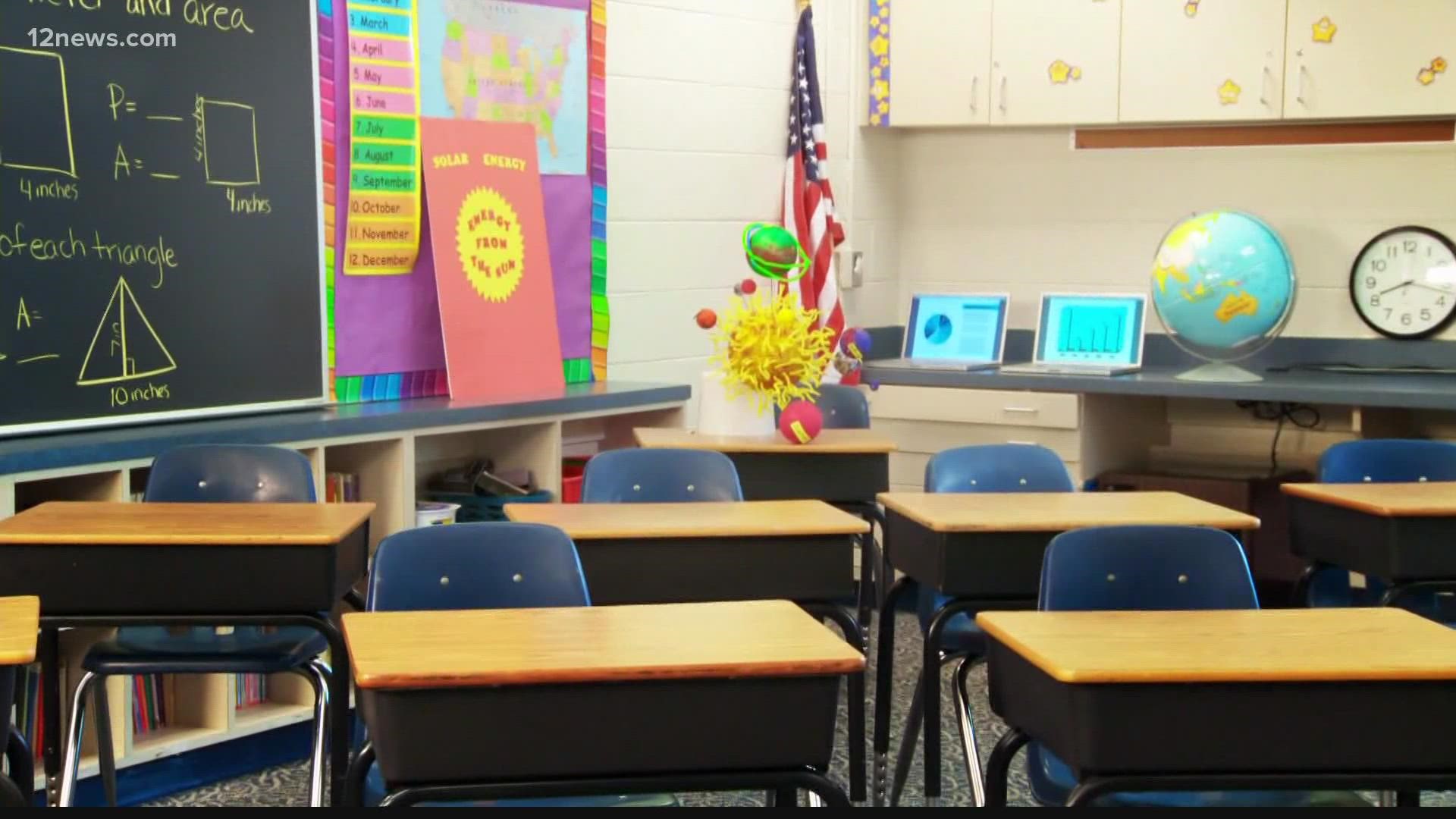ARIZONA, USA — Arizona has a rare challenge on its hands: How to spend a massive surplus of money.
Education advocates see this as a prime opportunity to boost school funding. But it’s possible that state lawmakers will do nothing.
Billions in Extra Funds
According to the Joint Legislative Budget Committee, the state has a $5.3 billion surplus during the next fiscal year. $1.57 billion of that money is ongoing permanent annual revenue.
Republican State Senator Paul Boyer of Glendale is proposing lawmakers add at least $850 million of new money for K-12 schools (the original proposal was $900 million). The voter-approved Prop 208 that was declared unconstitutional in March was anticipated to collect about $900 million in annual revenue.
“This is the first time in my experience where we have more money than we know what to spend it on,” Boyer said. “I think it would be a huge disservice to the state and also to education if we got out of here (the legislative session) without increasing spending.”
Boyer proposes “a grand bargain”
Boyer, a school teacher, is proposing a “grand bargain” that would also include an income tax cut, a fix to the aggregate expenditure limit and scholarships for high-poverty students.
Boyer said he’s building the plan off of a column written by Arizona Republic writer Robert Robb in January.
“There’s something in this for everybody,” Boyer said.
But it may be tough to convince some Republican lawmakers that schools deserve more. Many of Boyer’s Republican colleagues bristled at demands to add funding to schools while speaking on the Senate floor earlier this year when the Senate voted to raise the spending limit.
They repeatedly discussed the billions of dollars that have been added to the budget since the Great Recession. Many lawmakers point to the fact state funding is up 44% since 2008.
But taking into account inflation and student enrollment growth, per-pupil funding has inched up only 5% over that time, according to the Joint Legislative Budget Committee.
Per-pupil funding not keeping pace
According to federal data compiled by Arizona-based education consultant Anabel Aportela, in 1992 the state’s funding on a per-pupil basis was 88% of the national average. The most recent data in 2019 shows Arizona is spending only 66% of the national average.
School advocates say it’s no wonder Arizona ranks among the worst nationally for classroom size and teacher salaries.
“Every single superintendent I’ve talked to right now, they’re struggling,” Boyer said. “I’m sure some are doing ok. But by and large, schools are struggling to stay competitive. They’re struggling even to keep teachers in the room and now you’re dealing with long-term subs.”
Senate President wants a bi-partisan budget
Senate President Karen Fann tells 12 News it is her preference the legislature passes a bi-partisan budget that addresses not only schools but several other spending priorities like roads, water, border security and public safety.
“The bigger question is can we get at least 16 senators and 31 representatives to agree on a budget, realizing each legislator has their own spending priorities?” Fann said in a written statement to 12 News.
Fann declined to say whether she would be willing to support Boyer’s proposal.
“A ‘grand bargain’ should include all members of the legislature to consider what’s best for the state and their districts as a whole,” Fann said.
Arizona House Majority Leader Ben Toma did not respond to a request for comment.
Arizona Politics
Get the latest Arizona political news on our 12 News YouTube playlist here.

